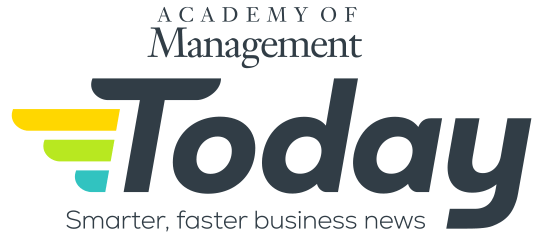Published on: May 12, 2025 at 8:06 pm
Set-in-stone schedules and fixed deadlines might not be a good way to help with planning and coordinating with colleagues. How everyone in an organization thinks about time—including work schedules and deadlines—has a huge impact on well-being and morale. Flexibility is likely to help boost productivity and quality.
Academy of Management Scholar Abbie Shipp of Texas Christian University, who coauthored an Academy of Management Annals article on that topic with Karen Jansen of North Carolina State University, said that having a predictable schedule can help some workers with planning, but being too much of a stickler for a rigid schedule—can backfire.
“We can be so focused on the future that we obsess over what might happen instead of savoring the current moment—we focus on the future at the expense of the present,” Shipp said. “In terms of how we allocate our time, it’s important for us to plan, but we also need contingencies, because the future is so ill-defined.
“I think in terms offinding ways to bothlook ahead but also be flexible—that’s a real key skill that we don’t have,” she said. “Some people say, ‘I’m not strategic; I don’t think long-term but I’m very into the present moment.’
“In contrast, other people do plan for the future very well but may struggle to adapt when such plans don’t materialize—we need people to navigate both, to be able to look ahead, but also be flexible.”
Shipp said that we need to redefine the ways in which we think and talk about time, especially in the workplace.
“We need to reimagine things that we think are fixed in objective time, but they’re not, for example, work schedules,” Shipp said. “When do we take breaks, whether it’s to get lunch or coffee or tea or go to the bathroom? What do deadlines mean?”
An early bird might be most productive from 6:00 to 11:00 a.m. while a night owl might be most productive from 6:00 to 11:00 p.m., neither of which aligns with a standard nine-to-five workday.
“Let’s say I start a new job in a structured office. We get here at 8:00. Most people take an hour-long lunch from 12:00 to 1:00. They leave by 5:00,” Shipp said. “But if my biological clock doesn’t work like that, I may want to work until 1:00 or 2:00, or maybe I break for only 10 minutes at lunch, and later in the afternoon, I take a break of 50 minutes.
“Rethinking some of these things that we think are more fixed and structured can pay dividends,” she said. “Maybe we can go more with the flow—instead of saying, ‘I’m going to work on this project from 8:00 to 10:00’ or ‘I’ve worked an eight-hour day,’ say ‘If I’m done after working from 9:00 to 4:00, then why can’t I leave a little early?’
“It certainly benefits workers and managers alike to be a little bit more flexible with time.”
A sample of Shipp’s AOM research findings:












